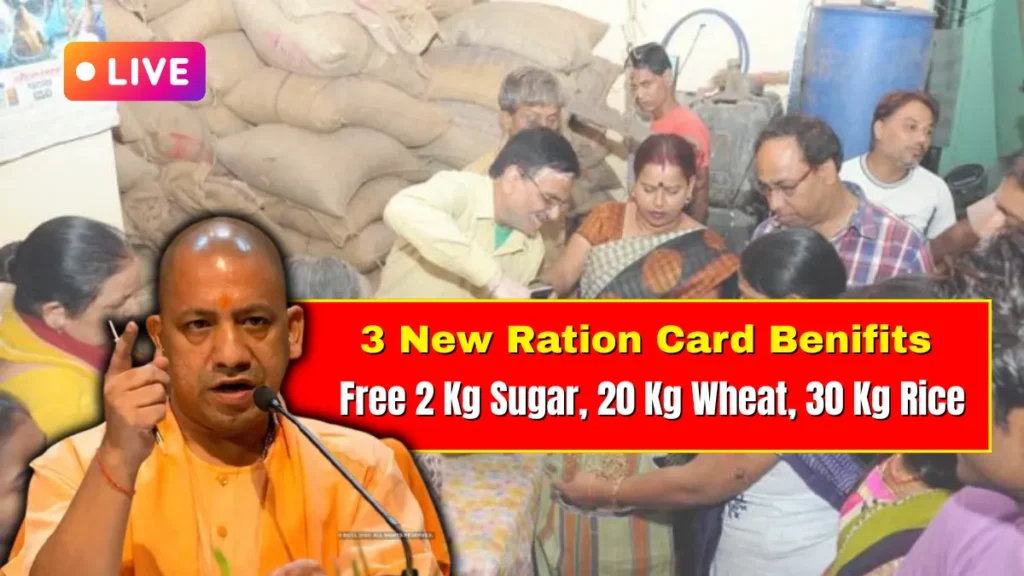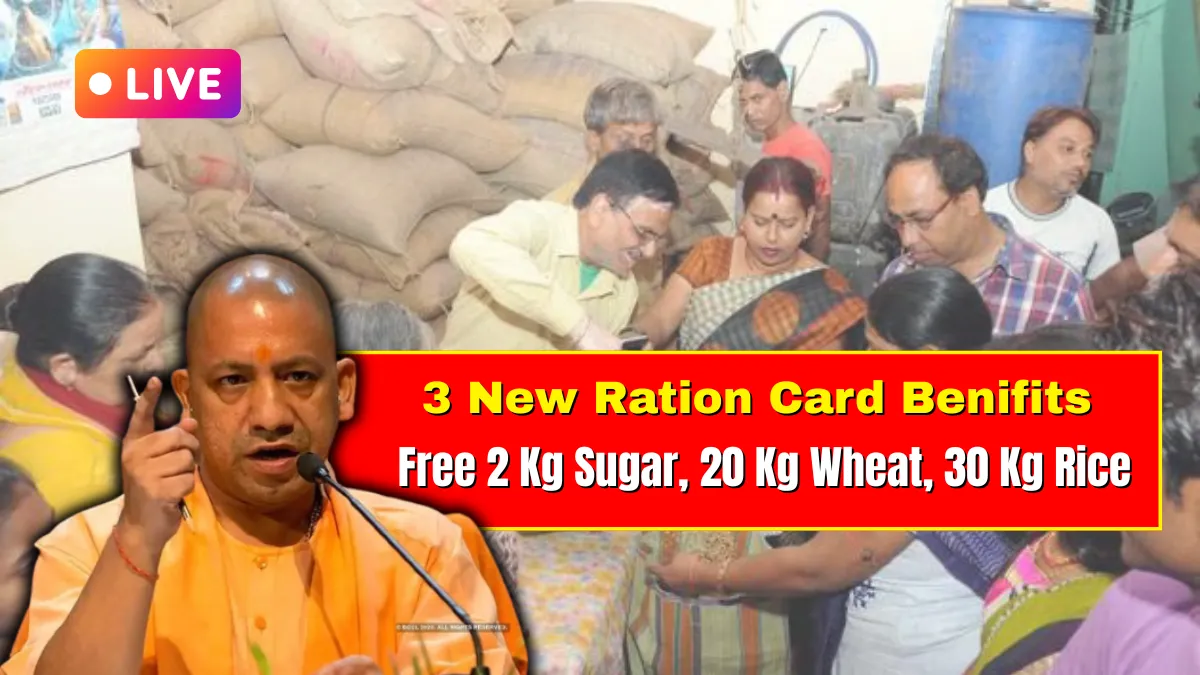2025 New Ration Card Benefits- In a major decision to help middle-class and poor families, the government has announced new and improved ration card benefits starting in 2025.
Under this new plan, families will receive 2 kg of sugar, 20 kg of wheat, and 30 kg of rice completely free every month.
This move is aimed at supporting people who are struggling with rising prices of essential goods and ensuring that no household goes hungry.
The new ration card policy is expected to benefit millions of families across India, especially those living in rural and low-income areas. Let’s take a detailed look at what’s new in this scheme and how families can take advantage of it.

What’s Included in the New Ration Card Scheme 2025
The 2025 ration card update brings a complete upgrade to the public distribution system. According to government sources, all eligible families will receive:
Rice – 30 kg per month (Free of cost)
Wheat – 20 kg per month (Free of cost)
Sugar – 2 kg per month (Free of cost)
In addition to these basic items, some states are planning to add edible oil, pulses, and salt at subsidized rates. The aim is to ensure that every family gets balanced nutrition at affordable prices.
Who Will Get These Benefits?
The scheme mainly targets BPL (Below Poverty Line) and APL (Above Poverty Line) families who hold a valid ration card.
The distribution will take place through the Public Distribution System (PDS) under the supervision of the Food and Civil Supplies Department.
Families already enrolled in Antyodaya Anna Yojana (AAY) or Priority Household (PHH) categories will get automatic benefits without any new registration.
if someone has not updated their ration card for years, they are advised to visit the nearest ration office and link their Aadhaar card to avoid any delays.
How to Apply for the New Ration Card or Update Existing One
If you do not yet have a ration card or need to update your existing one, follow these simple steps:
Visit your state’s official Food and Civil Supplies website.
Fill out the online ration card form with correct details such as family members, address, and Aadhaar numbers.
Upload required documents – Aadhaar card, voter ID, electricity bill, and income proof.
Submit the form online or at the nearest ration office.
Once approved, you will receive an SMS notification and can collect your ration card or download it online.
This process is simple and transparent. Most states have made it possible to track application status online, saving time and paperwork.
Government’s Vision Behind the Scheme
The main purpose of the 2025 ration card update is to strengthen food security and reduce hunger among citizens. The government believes that by providing essential grains and sugar for free, families can save a significant part of their monthly expenses.
This initiative is also expected to reduce malnutrition and ensure that children, women, and senior citizens have access to quality food every month.
It is a step toward making India a hunger-free nation and improving the overall standard of living for millions.
State Governments to Play a Key Role
While the central government provides the grains under the National Food Security Act (NFSA), state governments are responsible for managing the distribution.
Many states like Maharashtra, Uttar Pradesh, Madhya Pradesh, and Bihar have already started preparations to implement the new rules smoothly.
Local ration shops (fair price shops) are being upgraded with digital systems to prevent misuse and ensure that every beneficiary gets the correct quantity.
Final Words
The 2025 New Ration Card Benefits bring a ray of hope for millions of families who depend on government aid for their monthly groceries.
With 2 kg sugar, 20 kg wheat, and 30 kg rice provided free every month, this scheme will ease financial pressure and promote better nutrition.
If you or someone you know has a ration card, make sure it’s updated and active. This is not just a scheme — it’s a promise from the government to ensure no plate stays empty in India.
Disclaimer: The information provided in this article is based on publicly available sources. Readers are advised to verify details through official channels before making any decisions or applications.
